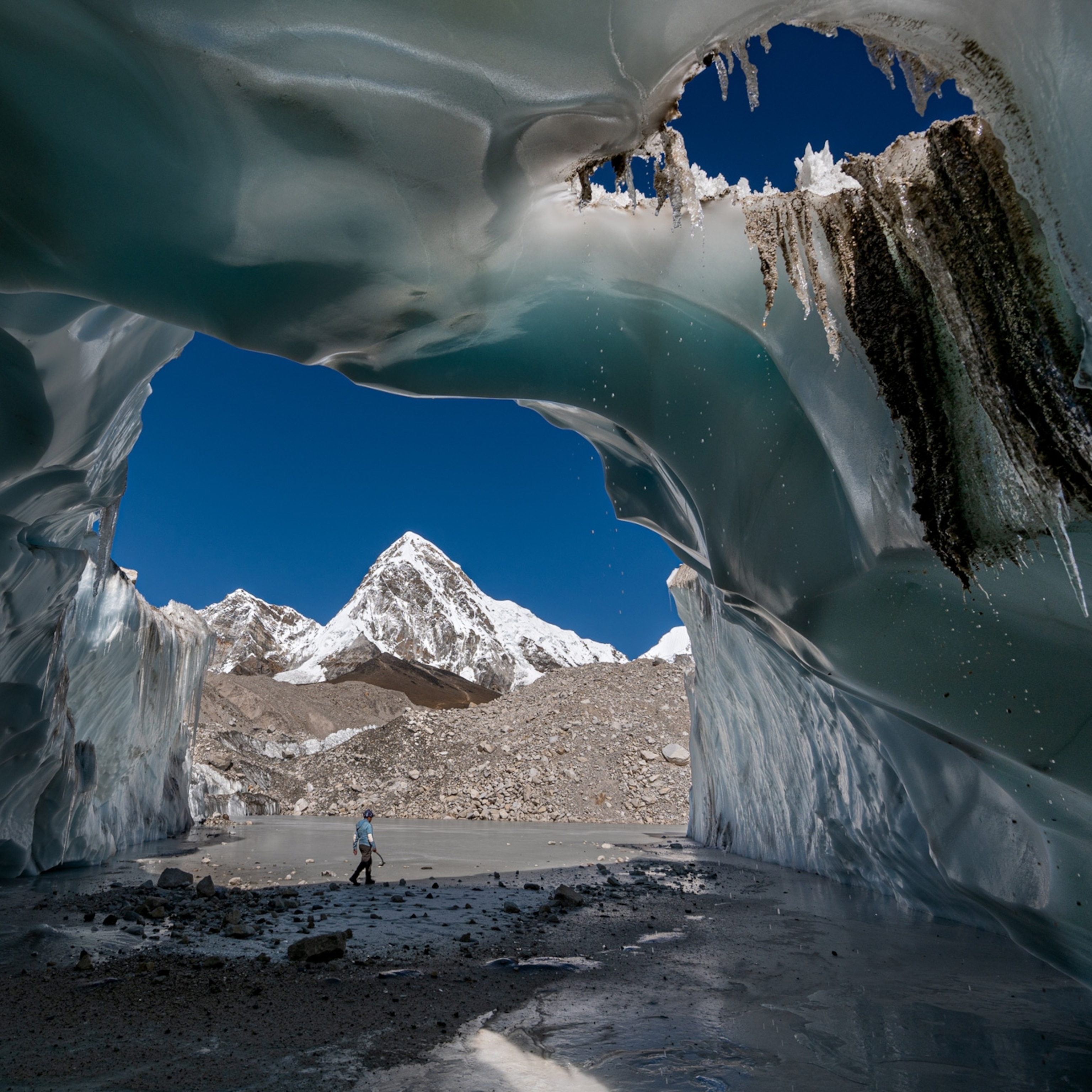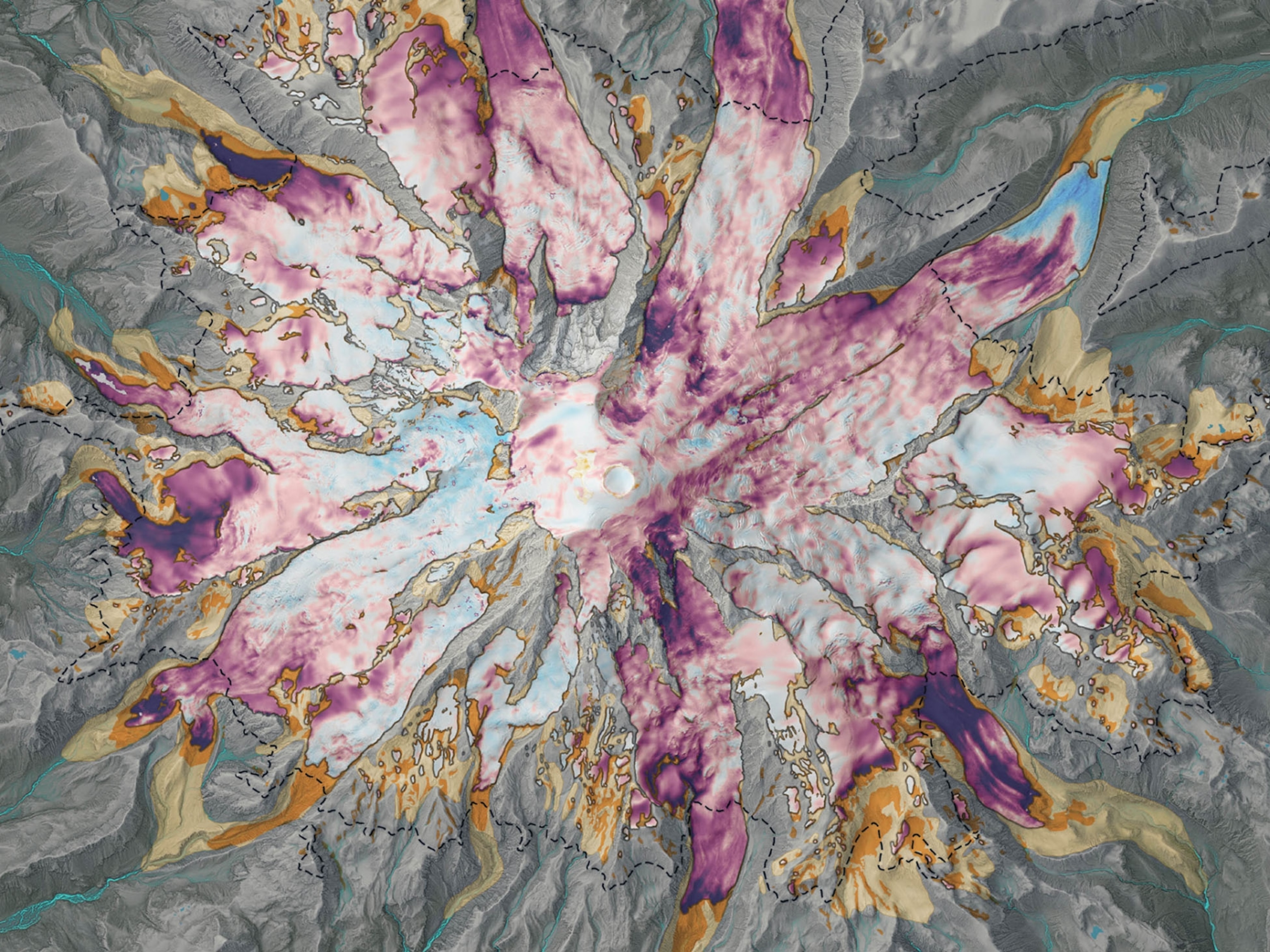
Venezuela's last glacier is about to disappear
The Humboldt Glacier in the Andes has been melting rapidly and will be gone before scientists even got a chance to study it fully.
The first time Carsten Braun visited the Venezuelan Andes was in 2009. He and his wife were climbing Pico Humboldt—the second highest peak in the country—and decided to bring along a GPS in order to measure a small glacier. “That was a total shoestring operation,” he said of the challenging hike to the ice.
Braun, a geography professor at Westfield State University in Massachusetts, has been back to visit the Humboldt Glacier a few more times since then. During his most recent research trip six years ago, the glacier had shrunk noticeably.
“If you imagine draping a pancake over a slope,” that’s what it looked like said Braun of this “pretty thin piece of ice,” no more than 65 feet thick. It would be just under a mile to walk around its entire circumference.
Once one of five major tropical glaciers in the country, the Humboldt is nestled within the Sierra Nevada de Mérida in the western part of the country. Thanks to climate change, Venezuela has found itself a frontrunner in a somber race, with others such as Tanzania and China, to see which country will lose its glaciers first. What we’re seeing now, said Braun, “is maybe the last gasp of the Humboldt Glacier.”
But due to a combination of political upheaval and funding challenges, it has largely been forgotten. It is expected to melt away in the next decade or two without scientists ever having fully studied Venezuela’s last glacier.
Rapid retreat
On a global scale, unlike in Greenland and Antarctica, non-ice sheet glaciers like those in mountains represent about one percent of the world’s glaciers, explained Alex Gardner, a research scientist with NASA’s Jet Propulsion Laboratory who describes his expertise as “all things icy.” So, their contribution to things like sea-level rise aren’t that significant. But because many of these are in areas where temperatures are frequently above freezing, they’re more sensitive to temperature fluctuations.
The Andes are home to more than 95 percent of the world’s tropical glaciers. In some countries, such as Peru and Colombia, the glaciers are a critical source of water—for drinking, hydropower, and agriculture. For them, losing this resource will have a drastic impact. And since the 1970s, glaciers across the region have been in rapid retreat.
“Honestly, I was surprised that there were even glaciers in Venezuela,” said Gardner.
Until recently, the only field studies conducted on Venezuela’s glaciers were in 1971 and 1992 by the late Carlos Schubert, one of the foremost experts on Venezuelan geology. Between Schubert’s two studies being published, four glaciers had disappeared.
In 2013, Braun and Maximiliano Bezada, a mentee of Shubert’s, co-authored a study on the most recent measurements of the Humboldt Glacier. Based on 2011 estimates, the glacier’s surface area was just 0.04 square miles, down about 0.02 square miles since Braun’s first visit in 2009. During this time, numerous cracks appeared throughout the glacier and meltwater was flowing at its base.
Thirty years ago the ice looked strong, said Bezada, a former geomorphology professor for the Instituto Pedagógico de Caracas at the Universidad Pedagógica Experimental Libertador, and one of the few scientists in Venezuela to study the Humboldt Glacier. “Now, it looks sick,” he said. “[It] will die very soon.”
According to Gardner, global temperature rise is the main culprit behind today’s shrinking glaciers. “The model projections show they’re going to retreat. The question is just how much and how fast,” he said.
Lower-lying glaciers like Humboldt are smaller and more vulnerable and are likely to disappear the quickest, he added.
Humboldt’s namesake
Constant snow and ice cover in the Venezuelan Andes was first recorded in 1560. During one 1941 expedition in the Andes, the petroleum geologist and avid mountaineer A. E. Gunther described the Humboldt Glacier as the “largest in these latitudes,” and noted that it would make, “after fresh snow, a splendid skiing slope.”
The mountain upon which the glacier sits takes its name from Alexander von Humboldt, a nineteenth century naturalist and explorer. Humboldt’s first views of Venezuela came in 1799 as he sailed towards its coast lined with green palms and banana groves; a series of cloud-covered mountains sat in the distance.
Here, Humboldt witnessed the devastating impact of deforestation from plantations in the Spanish colony. As a result, he became the first scientist to discuss the connection between human activity and climate change.
The naturalist outlined how a forest’s fundamental ecosystem services—everything from storing water to protecting the soil—were connected to the broader climate system. While most people during this time argued that our domination over nature was necessary for profit, Humboldt warned that we must first understand the full extent of humanity’s impact on nature.
As Andrea Wulf writes in her 2015 biography of Humboldt, The Invention of Nature, “The effects of the human species’ intervention were already ‘incalculable,’ Humboldt insisted, and could become catastrophic if they continued to disturb the world so ‘brutally.’”
As early as 1925, and again in the ‘90s by Schubert, scientists have been making the connection between human pollution from the Venezuelan town of Mérida and its potential impact on the nearby glaciers, which have been retreating over the past one to two hundred years since Humboldt’s warning.
Keeping tabs
Today, mountaineers are the only ones who get close enough to see the glacier. International scientists are either dissuaded from or simply not eager to propose research trips to a country deemed too dangerous to visit.
Add to this the reality that the Humboldt Glacier isn’t the most glamorous of the globe’s features—a mere spec compared to the ice fields in Patagonia—and it becomes easy to see why research funding may be hard to secure.
During his time, Schubert—among whose prized possessions was an 1815 edition of Humboldt’s Travels—had called for a monitoring program to document Venezuela’s glacial retreat; something echoed by Bezada and Braun. Yet no such program was ever established.
Some monitoring of the glacier can be done via satellite. But the glacier is now so tiny that the free data from the Landsat satellites is not high enough resolution to glean detailed information from, says Braun.
‘Entirely symbolic’
Described as “a glaciological anomaly” by Braun and Bezada, the Humboldt Glacier would probably have disappeared years ago if it weren’t for it being nestled on the shadier side of the mountain. And since the glacier is already so small, any impact on local water resources will likely be negligible.
“It’s entirely symbolic at this point,” said Gardner of the melting glacier. “This is the impacts of increased CO2 in the atmosphere.”
Braun agreed. Mérida is known as the Boulder, Colorado, of Venezuela. So, for those living nearby, the glacier is “part of their identity,” he said. “It’s part of their environment, looking up in these mountains and seeing ice.
“Once it’s gone it’s gone.”















